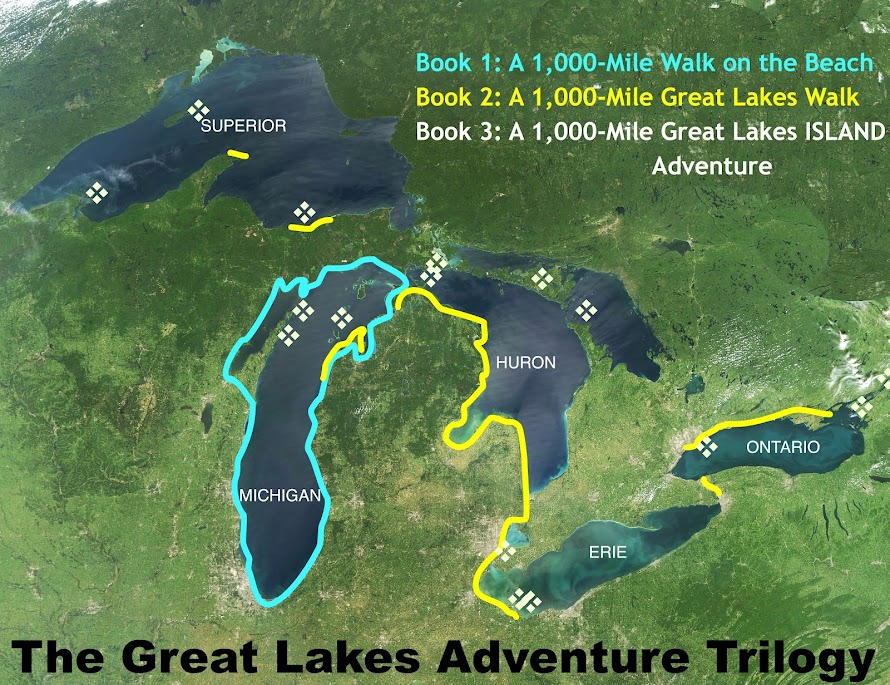 My earliest memory of Lake Michigan is running down a sand dune. And not just any dunes, the ones at Warren Dunes. When I was a kid, it looked like insurmountable. My siblings and I would scramble all the way up, one step slipping back for every two steps up. The sand was hot from the sun. At the top, we’d take a moment to catch our breath and look down the lake. The Lake. Blue water on and on and on. No seeing the other side, and it stretched left and right till it met the sky. The breeze off the lake blew up the dune, warming and lifting from the warm sand.
My earliest memory of Lake Michigan is running down a sand dune. And not just any dunes, the ones at Warren Dunes. When I was a kid, it looked like insurmountable. My siblings and I would scramble all the way up, one step slipping back for every two steps up. The sand was hot from the sun. At the top, we’d take a moment to catch our breath and look down the lake. The Lake. Blue water on and on and on. No seeing the other side, and it stretched left and right till it met the sky. The breeze off the lake blew up the dune, warming and lifting from the warm sand. Lifting. There was so much lift off that dune that hang gliders would launch off the top and glide high over the parking lot and almost to the water, banking and stalling and turning. You could fly off that dune if you had the right wing.
That exhilaration, that rush, followed by a cool plunge in the fresh lake marked me, and I haven’t been able to stay away from the lake for very long ever since.
But how do you really take in the lake? The scope of it, the scale, the depth and width? I’d heard those statistics about the Great Lakes, like, if you took all the water and spread it over the lower forty-eight states, it would cover to a depth of ten feet. When hearing this, I always picture the land under ten feet of water, how high that would come on my house and think: why in the world would anyone do that? Then I think that that isn’t really true, because the states aren’t flat. So, Denver would be high and dry a mile in the sky, but poor New Orleans would be extra flooded, maybe hundreds of feet submerged this time. And hasn’t New Orleans suffered enough?
And you hear statistics about the depth of Lake Michigan—the deepest spot being over 900 feet—and how you could stick the Eiffel Tower there and only have the top observation deck sticking out of the water. Now, that makes no sense to me at all. Who would go to all that trouble to prove a point?
And then Lake Michigan contains over a thousand cubic miles of water. Cubic MILES. That’s not even a useful measurement! Even the name for the lake, Lake Michigan, is derived from the Algonquin word michigami meaning ‘big lake.’ Even the Indians couldn’t articulate it better than that.
I’ve tried to get the scope of other large things. I’ve stood on the rim of the Grand Canyon, but couldn’t process the size of it until I descended, step-by-step, to the bottom, then ascended once again. After you do that, anytime you even look at a photo of the canyon, you feel it in your bones, your muscles.
I’ve driven around the lake, taken many trips along its edge. I’ve walked miles of its beaches, spent many joyful weeks jammed into summer beach rentals with friends and family. I’ve climbed the massive ice sheets tossed up onto the shore like modern ice sculptures during the winter. I walked the beach one early spring when these sculptures still remained at the water’s edge, but the sun was so warm that I took off my shoes to walk barefoot on the hot sand near the melting ice.So, come along with me on this journey, this 1,000 mile walk on the beach.
